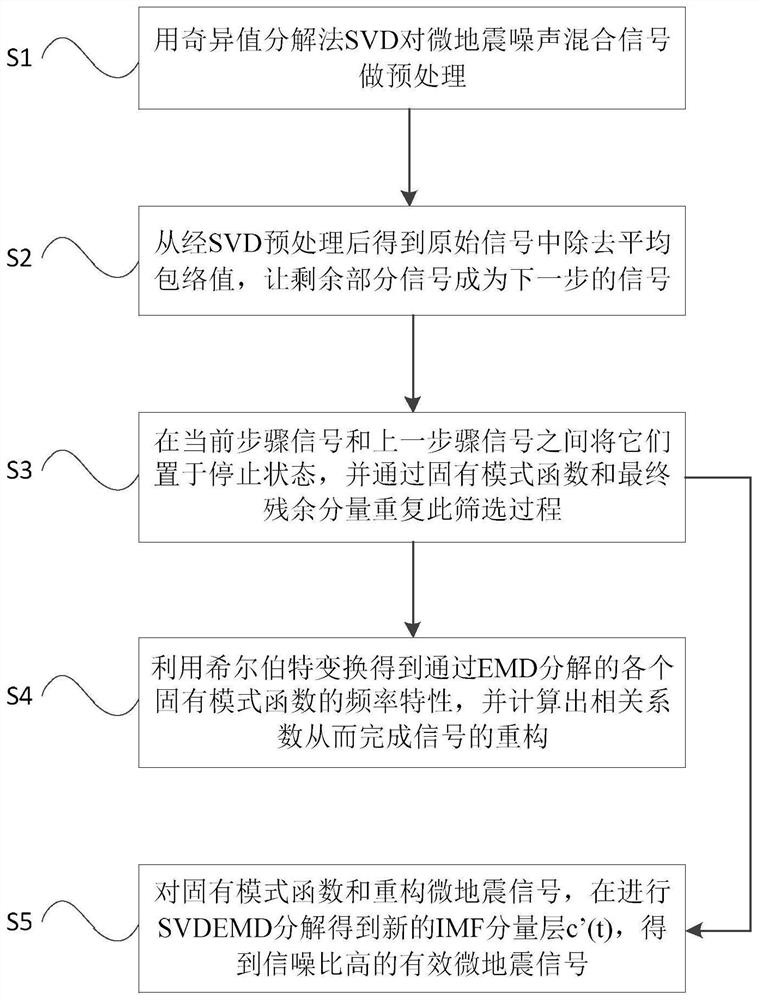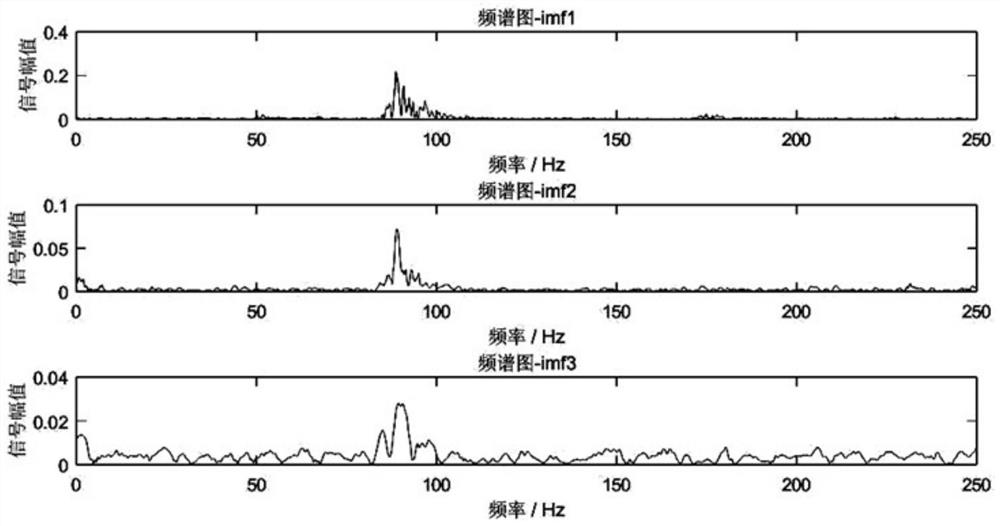Algorithm for separating microseism noise mixed signal by utilizing SVD-EMD algorithm
A noise mixing and micro-seismic technology, which is applied to pattern recognition, calculation, and complex mathematical operations in the signal, can solve the problems of event identification errors, difficulty in control, and large amount of calculation, etc., and achieve the improvement of micro-seismic phase identification and the effect The best, the effect of improving positional accuracy
- Summary
- Abstract
- Description
- Claims
- Application Information
AI Technical Summary
Problems solved by technology
Method used
Image
Examples
Embodiment
[0040] Such as Figure 1 to Figure 10 As shown, an algorithm using the SVD-EMD algorithm to separate microseismic noise mixed signals includes the following steps:
[0041](1) Using singular value decomposition (SVD) to preprocess the microseismic noise mixed signal. First, use the three components X(t), Y(t), and Z(t) in the microseismic signal s(t) to construct an m×n Hankel matrix A, and perform SVD decomposition on the matrix to obtain the mutually uncorrelated Noise subspace and signal subspace; then use SVD decomposition to obtain the singular value of the Hankel matrix A, retain the eigenvalues of the effective signals in the diagonal matrix, set the smaller eigenvalues to zero, and initially remove the noise in the high-frequency signal . The calculation formula of the SVD decomposition is:
[0042]
[0043]
[0044] Among them, U represents an M×N order orthogonal matrix; D represents a diagonal element; D=diag(σ 1 ,σ 2 ,σ 3 ...... σ n ) represents a ...
PUM
 Login to View More
Login to View More Abstract
Description
Claims
Application Information
 Login to View More
Login to View More - R&D
- Intellectual Property
- Life Sciences
- Materials
- Tech Scout
- Unparalleled Data Quality
- Higher Quality Content
- 60% Fewer Hallucinations
Browse by: Latest US Patents, China's latest patents, Technical Efficacy Thesaurus, Application Domain, Technology Topic, Popular Technical Reports.
© 2025 PatSnap. All rights reserved.Legal|Privacy policy|Modern Slavery Act Transparency Statement|Sitemap|About US| Contact US: help@patsnap.com



